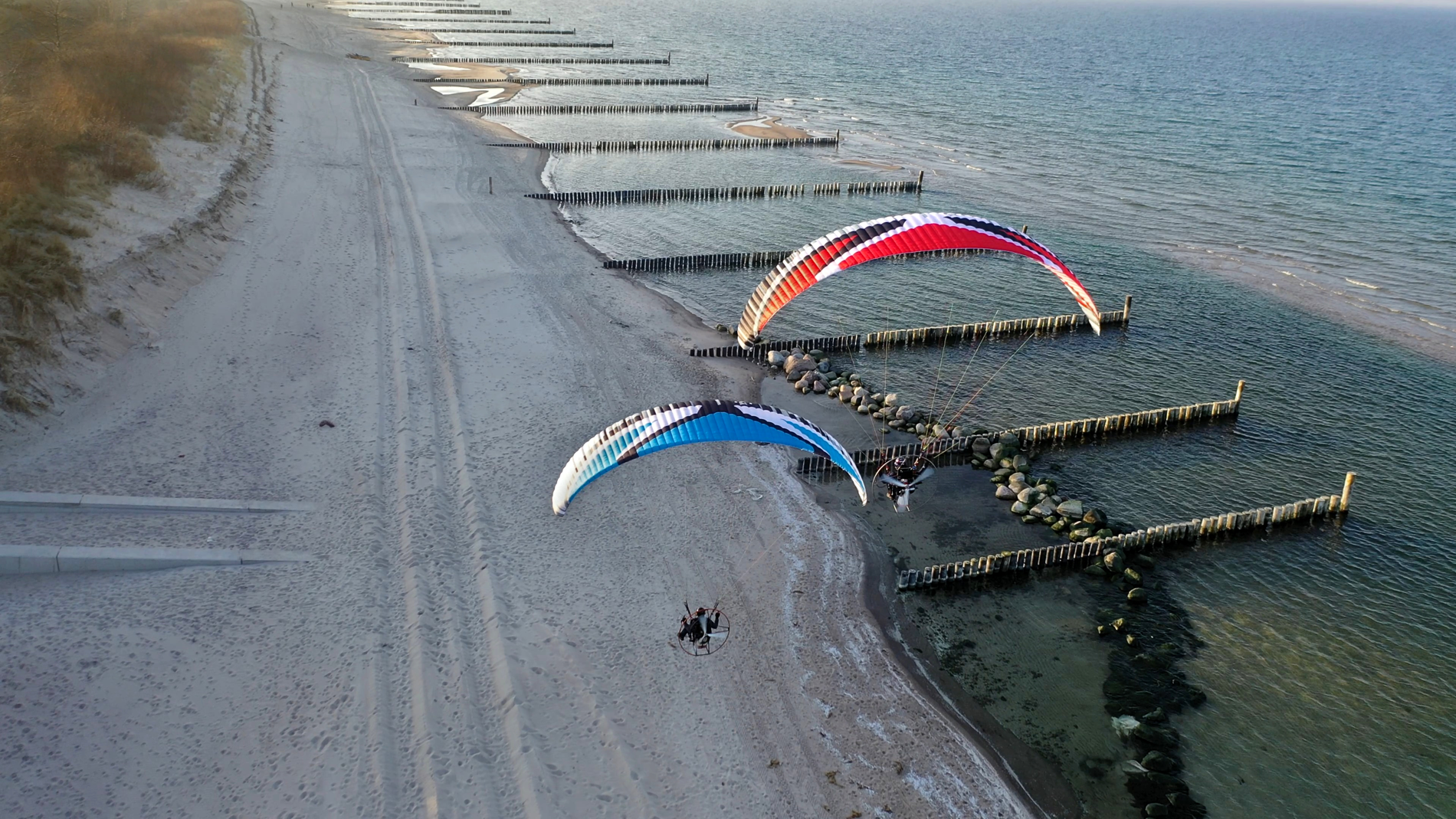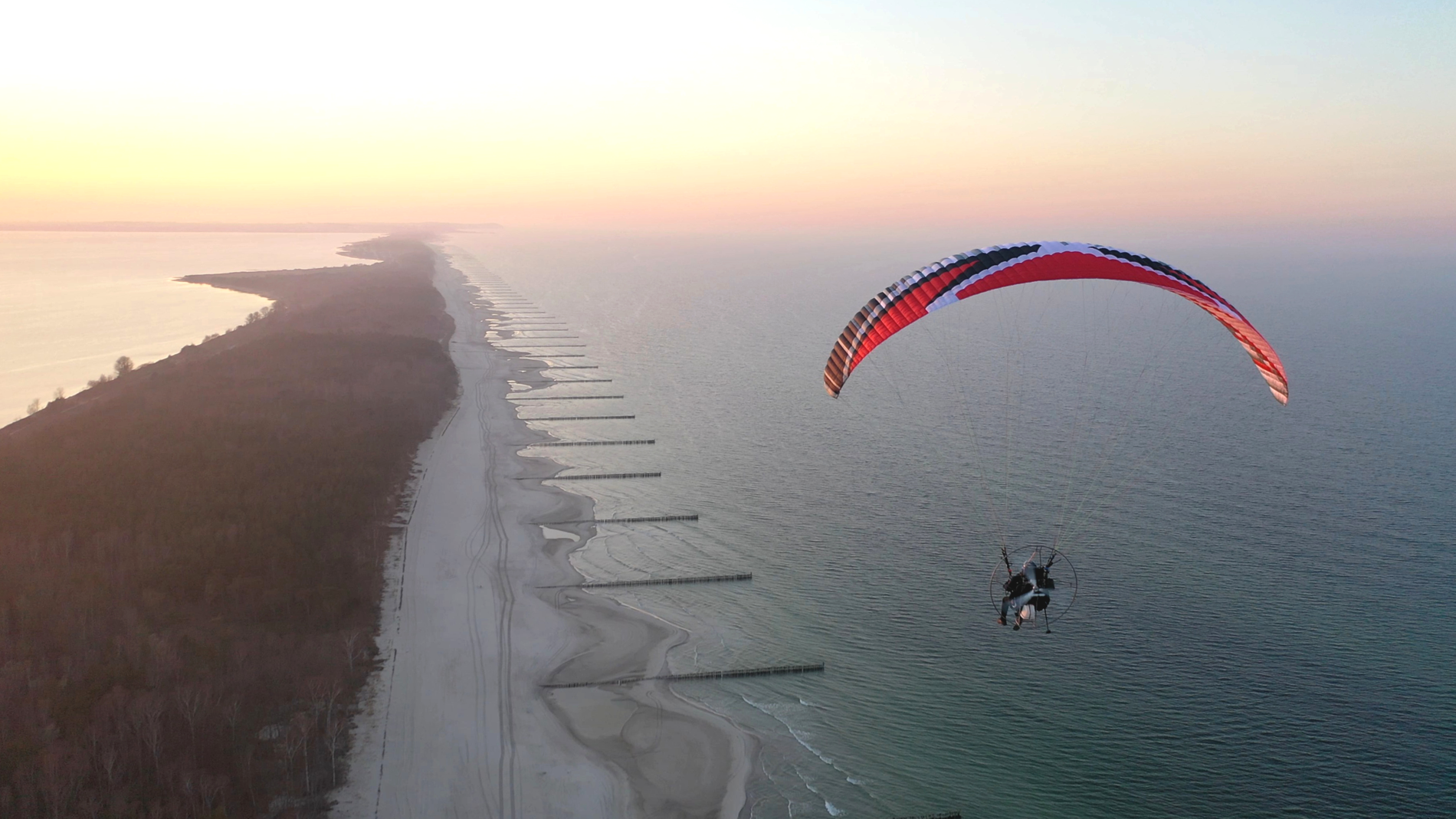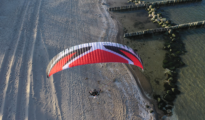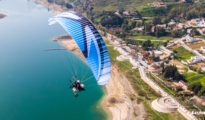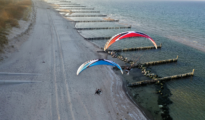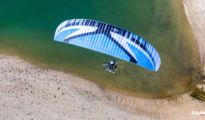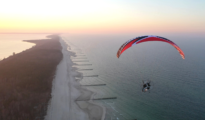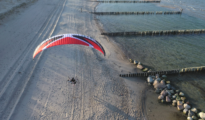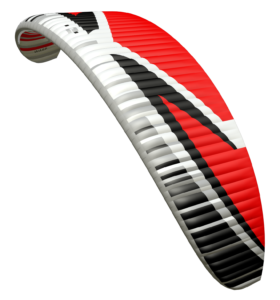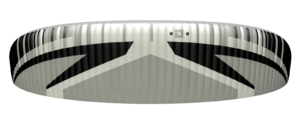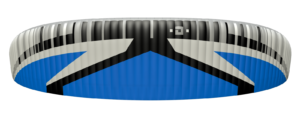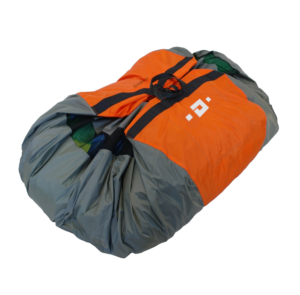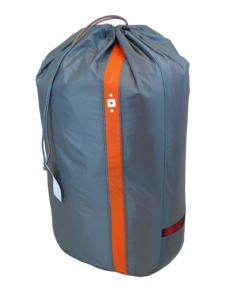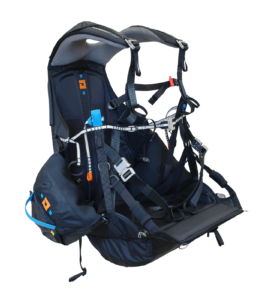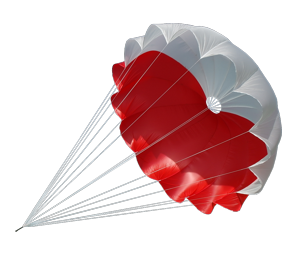Warp 2
Warp 2
A wing for experienced pilots, allowing you to reach higher level of sport and cross-country flying

Warp 2 is designed especially for experienced pilots.
An ideal tool for classic competition and cross-country PPG flying: solid, agile, fast and efficient, offering a real pleasure of flying.
Warp 2 is definitely one of the fastest PPG paragliders in the world at the moment.
Cover longer distances, flying faster and more efficiently!
Warp 2 as compared to its previous version:
- inflates much easier and faster
- is more economical
- achieves higher cruising speeds
- even better flares at landing
 See movie
See movie
Design
The significant improvement in the basic parameters of the Warp was possible due to:
- slightly altered profile and decreased modifying its geometry when changing the angle of attack
- incorporating the LE3D system, used in new generations of our wings
- clean three-row rigging with 17% less lines used, resulting in less drag.
The entire structure of internal reinforcements, including the advanced diagonal support system 3Y and 3Y double (passing through two cells and ribs at once) plays a large role in the stability of the wing. It is further complemented by carefully tuned controls, an integrated PA (Power Attack) system and, of course, the highest quality materials used for production.
PROPERTIES
During take-off, the wing requires less attention from the pilot than in the previous version.
The wing eagerly rises above the pilot’s head during the run-up and efficiently takes him into the air even at maximum take-off weight, and even at considerable altitudes above sea level (some of tests were carried out at an altitude of 1100 m asml).
Pleasant, precise steering, especially in the upper range of the take-off weight. The progression of the required braking force helps to avoid too large angle of attack. In longer flights, steering comfort is ensured by the TST system, indeed necessary at maximum flight speeds. Its use does not affect the reflex properties of the airfoil. The maneuverability of the new Warp is impeccable, just like the previous version.
The reflex profile is a guarantee of safety in the entire speed range, even at low angles of attack, while ensuring a high maximum speed, much higher than in the Warp 1. Higher speed and lower fuel consumption allow for increased flight range.
The recommendations for getting used to the Warp 1 during the first flights at maximum speeds can be helpful: see PDF
Design solutions, technologies and other functionalities are listed below in the Technologies section.
Construction solutions
TECHNOLOGIES, CONCEPTS
Risers functionality
USED SOLUTIONS
Parameters
Weight ranges
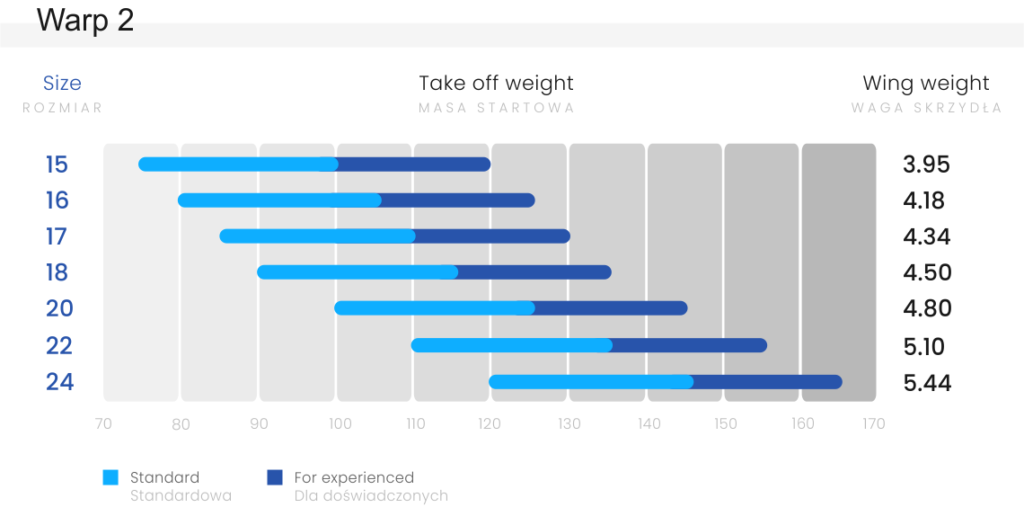
TECHNICAL DATA
| WARP – sizes | 15 |
16 | 17 |
18 | 20 | 22 | 24 |
| Approval – ULM Identification | yes | yes | yes | yes | yes | yes | yes |
| Number of cells | 62 | ||||||
| Wing area flat [m2] | 15.00 | 16.00 | 17.00 | 18,00 | 20,00 | 22,00 | 24,00 |
| Wing area projected [m2] | 12.76 | 13.61 | 14.46 | 15.31 | 17.01 | 18.71 | 20.41 |
| Wingspan flat [m] | 9.43 | 9.74 | 10.04 | 10.33 | 10.89 | 11.42 | 11.93 |
| Wingspan projected [m] | 7.58 | 7.83 | 8.07 | 8.30 | 8.75 | 9.18 | 9.59 |
| Aspect ratio flat | 6.00 | ||||||
| Aspect ratio projected | 4.50 | ||||||
| Speed* [km/h] | min = 31 ; trim = 48-65 ; max = 80 (+/- 3 km/h)* | ||||||
| Lines + risers length[m] | 5.50 | 5.68 | 5.86 | 6.03 | 6.35 | 6.66 | 6.96 |
| Total lines length [m] | 204.3 | 211.22 | 212.87 | 219.38 | 231.88 | 243.77 | 255.14 |
| Total ake-off weight** [kg] | 75-100** | 80-105** | 85-110** | 90-115** | 100-125** | 110-135** | 120-145** |
| Max take-off weight – for experienced*** [kg] | 120*** | 125*** | 130*** | 135*** | 145*** | 155*** | 165*** |
| Canopy weight [kg] | 3.95 | 4.18 | 4.34 | 4.50 | 4.80 | 5.10 | 5.44 |
| Distance betwen risers [cm] | 45 | 45 | 45 | 45 | 45 | 45 | 45 |
| Lines | A-8000U: 050; 070; 090; 130; 190 / Technora: 190; 280 / Dyneema: 350 | ||||||
| Cloth | Porcher Sport 38 g/m2, Dominico tex 34 g/m2, Porcher Sport Hard 40 g/m2, SR Scrim, SR Laminate 180 g/m2 | ||||||
* Speeds are given as estimated for the middle wing size and the middle of its weight range. These speeds can vary within +/- 3 km / h depending on the size, take-off weight and additional factors such as air pressure and temperature.
** The basic rule is to choose the size of the wing so that the take-off weight is in the middle of the weight range. Less weight on the wing (lower range take-off weight) can be considered for foot take-off, when flying in calmer conditions, or when we want to improve economy. More experienced pilots who want to fly dynamically, have higher speed and fly in more demanding wind conditions can consider greater wing loading (take-off weight in the upper range). This is a common option among trike users.
*** Note – the canopy significantly changes its behavior with increasing wing loading. The greater the loads, the greater skill and concentration of the pilot are required.





